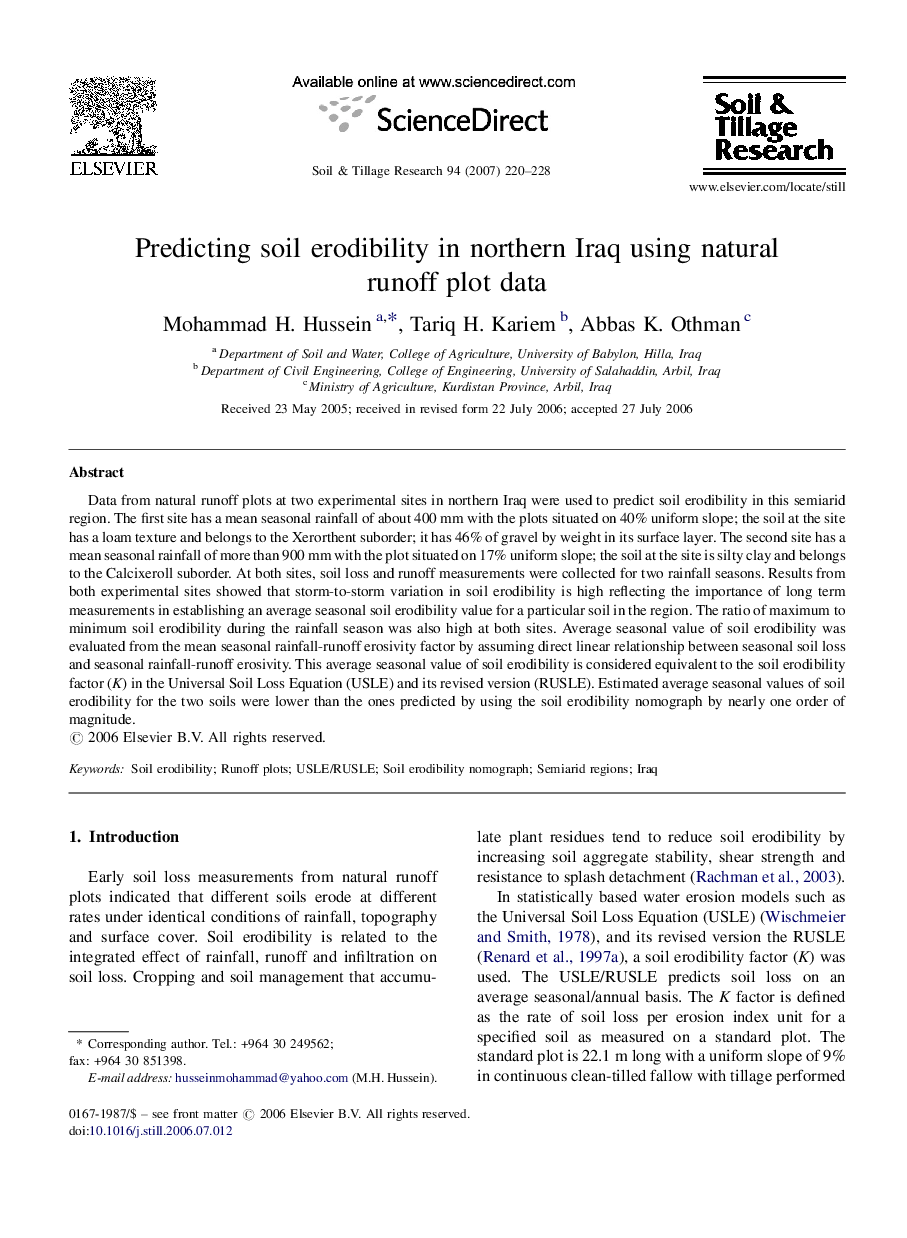| Article ID | Journal | Published Year | Pages | File Type |
|---|---|---|---|---|
| 306764 | Soil and Tillage Research | 2007 | 9 Pages |
Data from natural runoff plots at two experimental sites in northern Iraq were used to predict soil erodibility in this semiarid region. The first site has a mean seasonal rainfall of about 400 mm with the plots situated on 40% uniform slope; the soil at the site has a loam texture and belongs to the Xerorthent suborder; it has 46% of gravel by weight in its surface layer. The second site has a mean seasonal rainfall of more than 900 mm with the plot situated on 17% uniform slope; the soil at the site is silty clay and belongs to the Calcixeroll suborder. At both sites, soil loss and runoff measurements were collected for two rainfall seasons. Results from both experimental sites showed that storm-to-storm variation in soil erodibility is high reflecting the importance of long term measurements in establishing an average seasonal soil erodibility value for a particular soil in the region. The ratio of maximum to minimum soil erodibility during the rainfall season was also high at both sites. Average seasonal value of soil erodibility was evaluated from the mean seasonal rainfall-runoff erosivity factor by assuming direct linear relationship between seasonal soil loss and seasonal rainfall-runoff erosivity. This average seasonal value of soil erodibility is considered equivalent to the soil erodibility factor (K) in the Universal Soil Loss Equation (USLE) and its revised version (RUSLE). Estimated average seasonal values of soil erodibility for the two soils were lower than the ones predicted by using the soil erodibility nomograph by nearly one order of magnitude.
